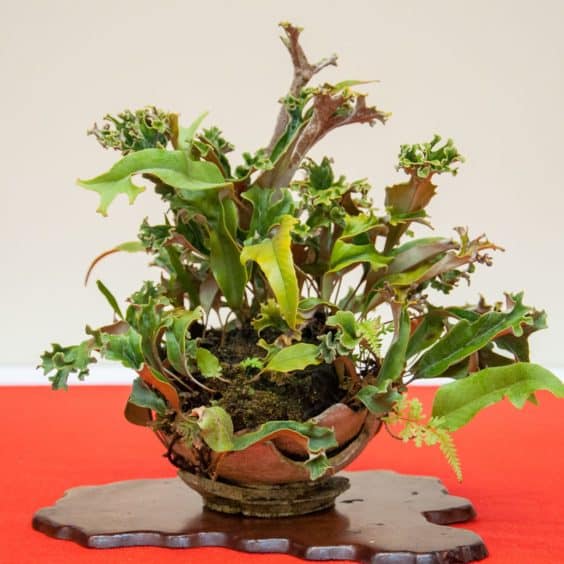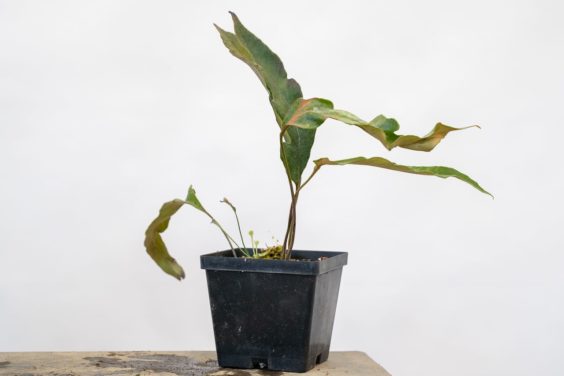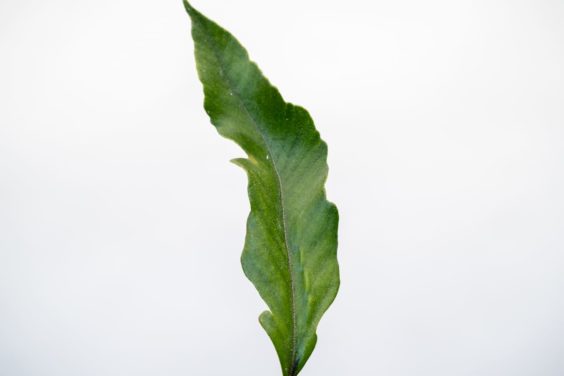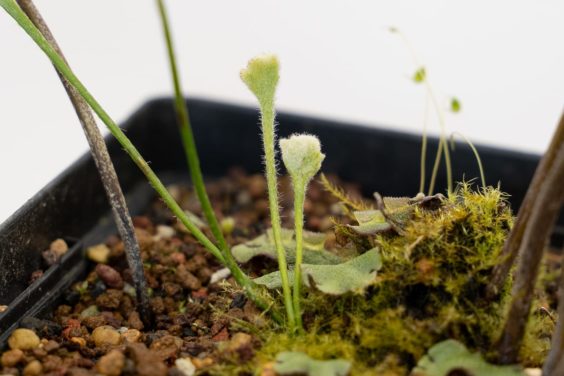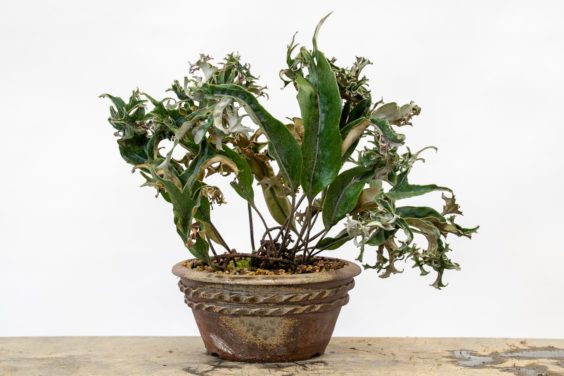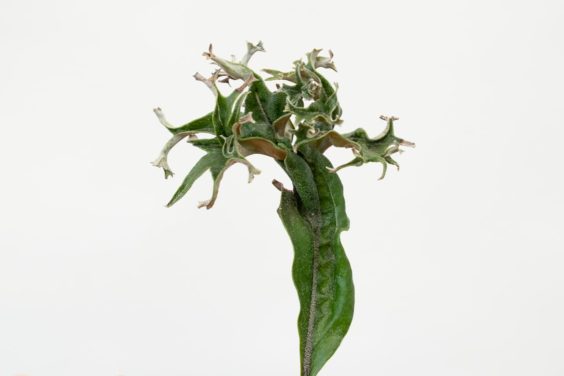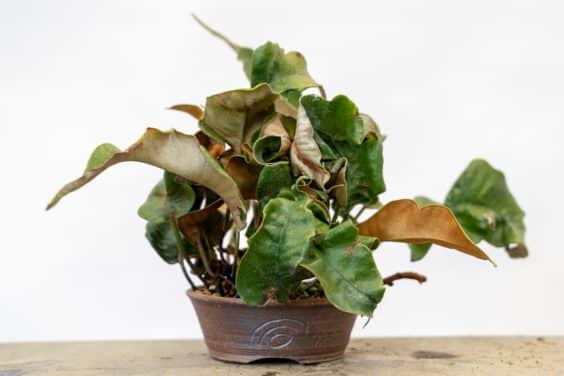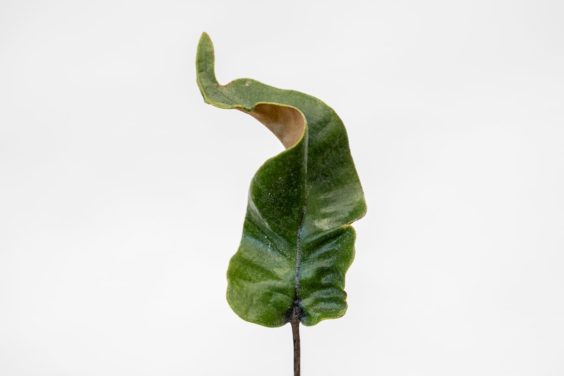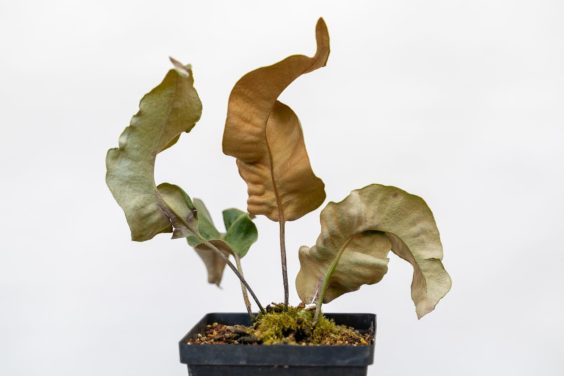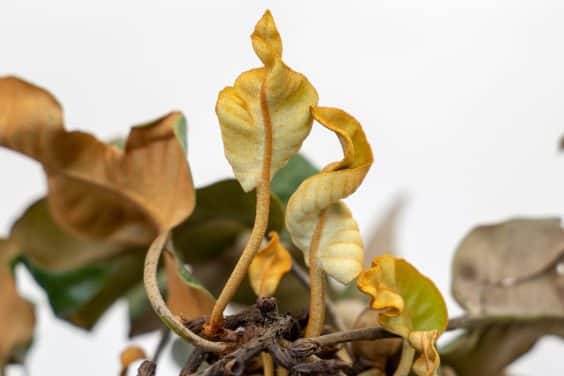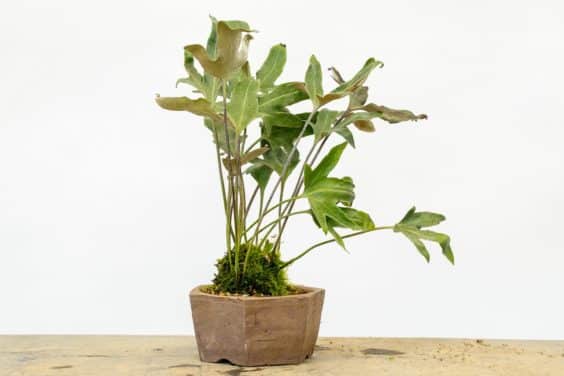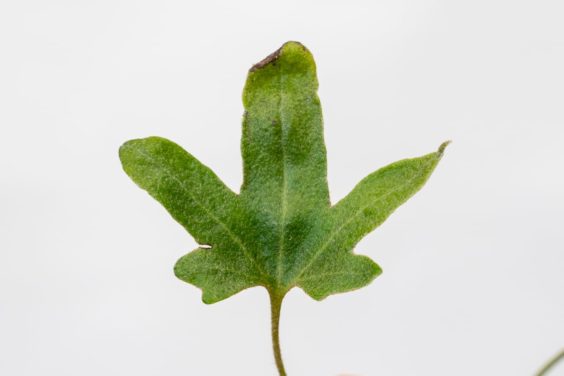If you’ve been to a bonsai exhibit in Japan or flipped though a Japanese exhibit book, you’ve likely seen accent plants featuring pyrrosia, an epiphytic fern.
Accent featuring pyrrosia at the 2011 Gomangoku exhibition in Okazaki, Japan
Although there are close to one hundred species of pyrrosia, many used for bonsai are cultivars of Pyrrosia lingua or tongue fern (hitotsuba in Japanese).
Young Pyrrosia lingua
The species gets its name from its tongue-shaped leaves.
P. lingua foliage
I’m not sure if the above sample is the straight species or if it’s a cultivar as it can be hard to tell one pyrrosia from another due to considerable variation from plant to plant.
Fortunately, pyrrosia are easy, if slow, to propagate by division. Shortly after dividing a clump, miniature leaves emerge signaling that the division has rooted.
New leaves
Two of my favorite pyrrosia featured curled and crenulated foliage. The first is a version of P. lingua known as crested pyrrosia (shishihitotsuba in Japanese).
P. lingua f. cristata
The leaves of this pyrrosia are interesting as they both divide and curl near the end of the leaf.
Another favorite is P. lingua var. ‘Eboshi.’ I believe this fern gets its name from the man of war jellyfish.
Like many pyrrosia, the leaves are green on the upper surfaces and tan or silver below.
The upper surface is green
The underside of the leaves are tan or silver
New leaves can have a yellow cast
Closely related to the tongue fern is Pyrrosia polydactyla. Polydactyly refers to the condition of having excess fingers or toes – the lobes, in this case, into which the fern’s leaves divide.
Pyrrosia polydactyla
P. polydactyla foliage
I’ve found pyrrosia to be easy to grow. They aren’t picky about soil, though keeping them too wet can cause problems. They don’t require a lot of light and get sunburned in full sun.
The above species are just a small sample of pyrrosia that work well as accent plants. If you have other suggestions – or corrections about any of the names above – feel free to let us know in the comments.
Watch Session 2 of the LAB this Saturday
The Pacific Bonsai Museum’s LAB (Living Art of Bonsai) project is a four-part, multiyear-long experiment investigating the influence of inspired architectural settings and the effect of re-sequencing the art of bonsai in a collaborative environment. In short, it’s an opportunity to see what happens when one starts a bonsai composition with the pot or stand rather than starting with the styling of a tree.
Session one was held last August (see highlight video below). The second session will be held this Saturday, April 6th. To learn more about the project featuring Ron Lang, Austin Heitzman, Ryan Neil, and Aarin Packard, or to watch it live, click here.
Subscribe to Bonsai Tonight
New Posts Delivered Every Tuesday and Friday
